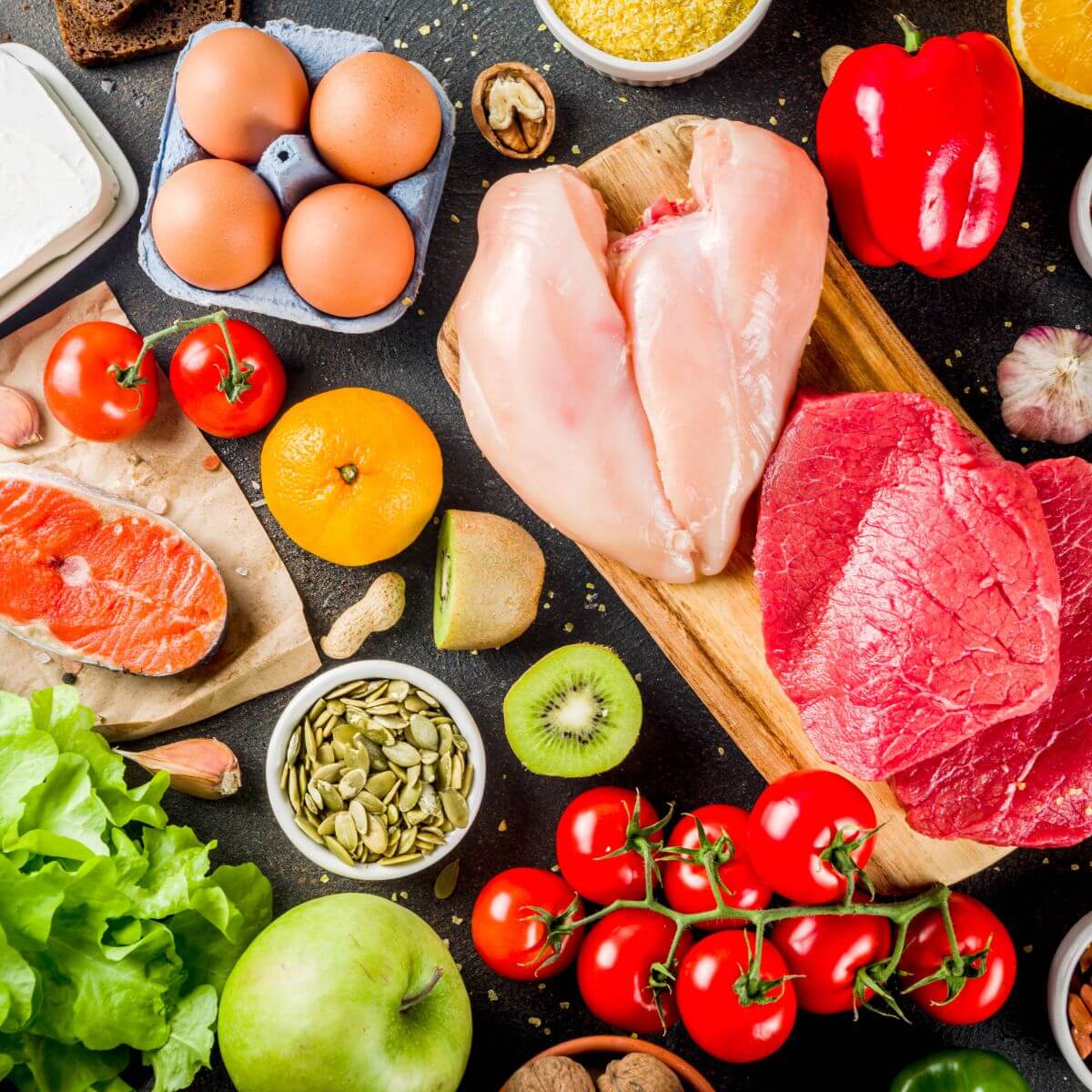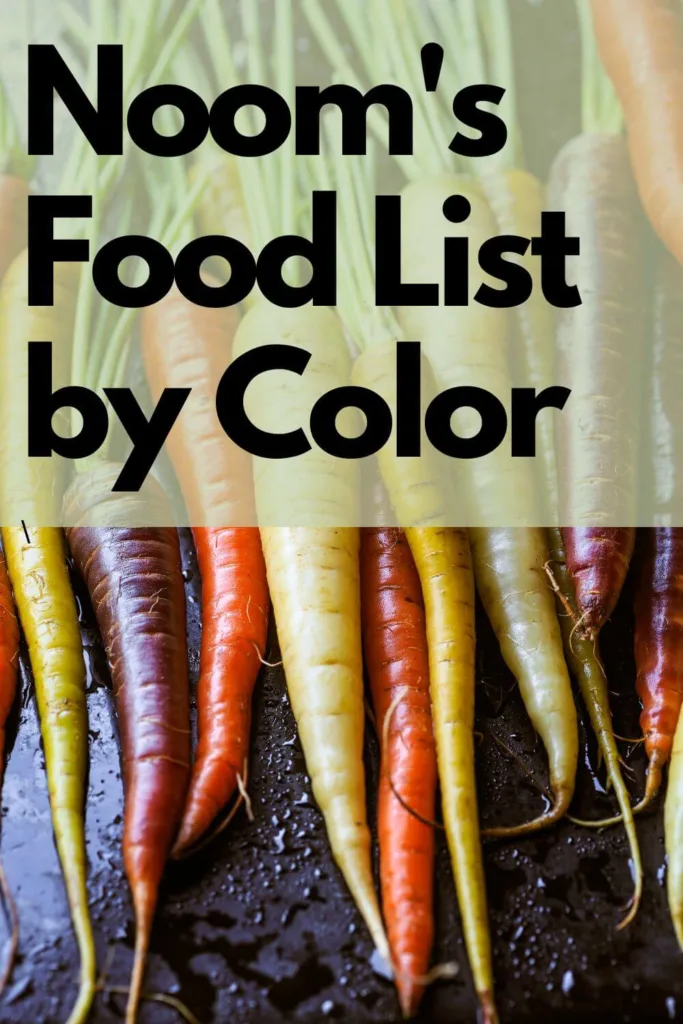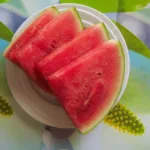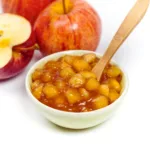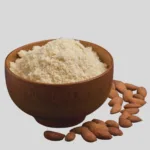In the crowded field of health and nutrition, sorting through advice can be daunting. Amidst the plethora of diet regimens, Noom offers a different approach to foster healthier eating habits and facilitate weight loss. A key feature is the color-coded Noom food list. But how exactly does the Noom food list by color work?
Noom Explained
Noom is a weight loss program that uses a color system to categorize foods. Instead of labeling foods as “good” or “bad,” Noom groups them into green, yellow, and orange/red, based on calorie density and nutritional content.
We know any diet plan has pros and cons, and there are fans and not of Noom out there. But is it right for you? Let’s take a closer look.
Noom Pros and Cons
The Noom weight loss program utilizes cognitive behavioral therapy and personalized coaching to help individuals understand their eating habits and make healthier choices. Let’s explore some of the pros and cons of this program.
Pros of the Noom Diet Plan
- Comprehensive Approach: Noom doesn’t just focus on a diet; it takes a holistic approach to weight loss, factoring in physical activity and psychological aspects of eating behaviors as well.
- Personalized Plan: Upon sign-up, users complete a questionnaire that takes into account current weight, lifestyle, health concerns, and goals to generate a tailored plan.
- Psychological Support: The program uses cognitive-behavioral therapy to address the root causes of unhealthy eating habits, providing tools to change and manage these behaviors long term.
- Access to a Health Coach: Users have access to a dedicated health coach during business hours for guidance, and motivation, and to answer any questions that arise.
- Food Logging: Noom encourages users to log their meals, an effective strategy for weight loss, and increasing awareness about food choices and portion sizes.
- Educational Resources: Noom offers daily articles and challenges to educate users about nutrition, physical activity, and the psychological aspects of weight loss.
- Community Support: The Noom community provides a platform for users to connect, share experiences, and offer each other support.
- Flexibility: No food is off-limits on Noom. Instead, foods are categorized into green, yellow, and red to guide healthier choices without deprivation.
- Physical Activity Tracking: Noom can sync with most fitness trackers and encourages users to set and track exercise goals.
- Research-Backed: Several studies have shown that Noom is effective for weight loss and improving health markers.
Cons of the Noom Diet Plan
- Cost: Noom requires a subscription, and the cost may be prohibitive for some. It’s more expensive than many other weight loss apps.
- Time Commitment: Logging meals, reading daily articles, and participating in the program can be time-consuming.
- Limited Face-to-Face Interaction: While Noom provides access to a health coach, interactions are typically through messaging, which may not provide the same level of support as in-person consultations.
- Automated Responses: Some users have reported that the feedback from coaches often feels automated and lacks a personal touch.
- Overemphasis on Calorie Counting: Although Noom emphasizes healthy food choices, it still uses a calorie-based approach, which might not suit everyone.
- Lack of Focus on Whole Foods: Some users feel the color coding system can encourage the consumption of processed low-calorie foods over higher-calorie whole foods.
- Could Exacerbate Disordered Eating: For some individuals, the Noom plan’s focus on food categorization and calorie tracking may exacerbate disordered eating patterns by reinforcing unhealthy preoccupations with food and weight, potentially leading to restrictive eating, binge eating, or other unhealthy behaviors. It could also trigger you if you have a history of an eating disorder or disordered eating.
- Limited Guidance Post-Program: Once the program is complete, some users may feel unsupported or unsure about maintaining their new habits.
- Data Privacy Concerns: As with any app, there are potential data privacy concerns with sharing health-related information.
- Technical Issues: Some users have reported technical glitches with the app, such as problems logging meals or syncing with fitness trackers.
- Sustainability: As with any weight loss program, some people may find it difficult to stick to the Noom plan long term.
Unpacking the Noom Food List by Color
Green foods are the least calorie-dense and pack the most nutrients. This category features a broad range of vegetables, including spinach, lettuce, broccoli, cucumbers, carrots, and Brussels sprouts. It also embraces whole grains like brown rice, oatmeal, and quinoa, alongside fruits such as apples, bananas, strawberries, blueberries, cherries, and watermelon.
Yellow foods are moderately calorie-dense. This category covers proteins like chicken, turkey breast, eggs (or egg whites for a lighter option), lean meats, and legumes like chickpeas and lentils. Also included are dairy products like Greek yogurt, low-fat cheese, and low-fat milk, plus healthy fats like avocados, almond milk, and olive oil.
Red foods, being the most calorie-dense, are advised in moderation. These include bacon, red meats (like beef), pizzas, desserts like cookies, cake, and chocolate, and snacks like potato chips.
The nitty Gritty of Noom Food Lists
Noom’s Green Food List
The green food list is expansive, including a variety of vegetables, fruits, and whole grains. Foods like green beans, peas, peppers, and onions all feature here, as do almonds and other nuts. Below is a list of all green foods:
Low-Fat Dairy Products: Consider choices like Greek yogurt, cottage cheese, milk, cheese, and sour cream for this category.
Robust Vegetables: This category includes carrots, sweet potatoes, spinach, broccoli, cucumbers, lettuce, mushrooms, bell peppers, asparagus, green beans, onions, peas, Brussel sprouts, and another round of sweet potatoes.
Fruit Varieties: In this group, you’ll find apples, strawberries, oranges, blueberries, bananas, tomatoes, watermelon, grapes, raspberries, pineapple, pears, cherries, peaches, mangoes, and figs.
Whole Grains: This section features wheat bread, whole grain pasta, pita, rice, quinoa, grits, brown rice, and barley, among others.
Healthful Proteins: Look to egg whites, shrimp, lean white fish, mahi-mahi, lobster, and tofu for lean and healthy protein sources.
Condiments: Here we have salsa, apple cider vinegar, sauerkraut, citrus juice, and tomato sauce to add flavor to your dishes.
Noom’s Yellow Food List
Yellow foods are more calorie-dense than green but still provide crucial nutrients. This category includes couscous, pasta, hummus, sweet potatoes, tofu, tomatoes, tuna, and low-fat cheeses. Below is a list of all yellow foods:
Lean Proteins: This section includes steak, various fish, turkey, chicken breast, pork, lamb, canned tuna, and sushi.
Fruit Selection: Here, you’ll find olives, dried apricots, prunes, canned pineapples, avocado, and plantains.
Dairy Products: Low-fat yogurt, 2% low-fat milk, low-fat cottage cheese, and low-fat cheese make up this category.
Snack Options: Choices such as hummus, fruit cup, banana pancake, rice pudding, and acai bowls are included here.
Beverage Choices: This section lists diet sodas, ginger beer, vodka soda, grapefruit juice, light beer, orange juice, fruit smoothies, and unsweetened cranberry juice.
Legumes: Lentils, butter beans, edamame, baked and refried beans, tempeh, and chickpeas are the nutritious options in this category.
Condiments: This group includes gravy, oyster sauce, cacao powder, balsamic vinegar, mustard, soy sauce, teriyaki sauce, and pizza sauce to enhance your meals.
Noom’s Orange/Red Food List
Orange/Red foods, while high in calories, can still form part of a balanced diet. This category includes foods like hamburgers, pork, salami, ham, full-fat dairy products like mayonnaise and ranch dressing, and certain fruits like coconut and pineapple, as well as condiments, alcoholic drinks, and popular desserts. Below is a list of all red foods:
Fruits: The fruit category includes dates, raisins, and dried cranberries.
Grains: Here we have white bread, biscuits, pita bread, hot dog buns, flour tortillas, croissants, bagels, granola, saltines, waffles, and muffins.
Dairy: For this category, consider butter, margarine, full-fat cheese, whole milk, half and half, cream cheese, cottage cheese, and full-fat yogurt.
Condiments: In this group, you’ll find olive oil, ranch dressing, sour cream, mayonnaise, ketchup, barbecue sauce, pesto, coconut milk, maple syrup, and honey.
Snacks: Nuts, tortilla chips, potato chips, crackers, popcorn, and pretzels are included in this section.
Desserts: Here we have sugar, dark chocolate, ice cream, cookies, cake, brownies, apple pie, candy, cheesecake, and whipped cream.
Beverages: This section lists red wine, white wine, champagne, coffee creamers, hot chocolate, vodka, margarita, apple cider, and mixed coffee drinks.
The Benefits of Colorful Eating
Eating a variety of foods that span the colors of the rainbow can contribute to a balanced diet packed with essential vitamins, minerals, and antioxidants. Vibrant foods do more than just make your plate look more appealing – each color group offers its unique health benefits. Let’s take a deeper look at the nutritional significance of these colorful foods.
Black Foods: From black beans and blackberries to black rice and black sesame seeds, these foods are filled with anthocyanins, powerful antioxidants that can help reduce inflammation, promote heart health, and may even lower the risk of some cancers.
Orange Foods: Foods such as carrots, sweet potatoes, oranges, and apricots glow with beta-carotene, which our bodies transform into vitamin A. This vitamin is essential for good vision, supporting the immune system, and nurturing skin health.
Pink Foods: Salmon, shrimp, and grapefruit are examples of pink foods that provide an array of essential nutrients. Salmon, for instance, is an outstanding source of heart-healthy omega-3 fatty acids, while pink grapefruit supplies lycopene, an antioxidant known for its potential anti-cancer properties.
Red Foods: Foods like tomatoes, strawberries, and cherries are rich in both lycopene and anthocyanins. These compounds have been linked to a reduced risk of heart disease and cancer, and offer anti-inflammatory and anti-viral benefits.
Yellow Foods: Bright yellow foods such as bananas, corn, and pineapples boast a wealth of vitamins and antioxidants, including vitamin C, carotenoids, and bioflavonoids. These can enhance immune health, support eye health, and promote good digestion.
Blue Foods: Foods like blueberries, plums, and blackberries come packed with anthocyanins, potent antioxidants known to boost memory, protect the heart, and provide anti-aging effects. Check out our post all on blue fruits.
Purple Foods: Purple foods like eggplant, purple cabbage, and grapes, much like blue fruits, are loaded with anthocyanins. These contribute to better cardiovascular health, a robust immune system, and may provide anti-cancer benefits.
Brown Foods: Despite their humble color, brown foods like whole grains, nuts, and seeds, are filled with dietary fiber, aiding digestion, controlling blood sugar levels, and potentially reducing the risk of heart disease.
Green Foods: Foods like leafy greens, avocados, green onions, and green peas offer a wealth of nutrients including Vitamins A, C, K, and folate. Plus, they contain carotenoids like lutein and zeaxanthin, known to support eye health.
On another note, white foods such as cauliflower, garlic, and onions are enriched with potent phytonutrients like allicin, renowned for its antimicrobial and anti-inflammatory benefits.
Variety is crucial in a healthy diet. Including an assortment of colors in your meals will ensure you get a comprehensive range of nutrients for optimum health. Inviting the full spectrum of food colors to your table is an investment in your wellbeing with each meal.
Lastly, it’s worth noting that the concept of “colorful foods” here shouldn’t be confused with how diet programs like Noom categorize foods into red, orange, and green categories. This approach is based on calorie density and nutrient content rather than the actual color of the foods. Always remember, the actual colors of your foods, as described in this post, represent a diverse array of health-promoting nutrients. So, make your meals vibrant, varied, and full of life!
Noom Food List FAQs
Are red foods “bad”?
No, red foods aren’t inherently bad. Noom encourages a balanced approach to nutrition. These foods often contain valuable nutrients but are just higher in calories. The key is moderation.
Can I snack on Noom?
Yes, snacks are definitely permitted on Noom. Options range from apples, cucumbers, carrots to a slice of low-fat cheese. Even a piece of dark chocolate can be enjoyed, bearing in mind the principle of moderation.
How does Noom accommodate special dietary needs?
The Noom food list is customizable, making it adaptable to a range of dietary needs, whether vegetarian or allergy-specific.
How often should I refer to the Noom food list?
The Noom food list is designed to be a daily reference for healthy, balanced food choices. It helps with portion control and staying within your daily calorie budget.
Do I need to count calories on Noom?
While Noom helps you understand the concept of calorie density, its focus is more on mindful eating than strict calorie counting. The emphasis is on the quality, not just the quantity, of calories consumed.
Final Thoughts on Noom Food List by Color
The Noom food list by color is not just about directing you to healthier options like spinach salads or quinoa recipes or advising moderation with treats like cake. It’s about offering a fresh perspective on dietary habits, making it more than a diet—it’s a shift in lifestyle.
Noom is a tool that, when utilized effectively, can lead to lasting lifestyle modifications. There’s no better time than the present to download the Noom app, engage with coaches, explore healthy recipes, and begin your journey to a healthier you. The journey to meet weight-loss goals involves more than just reaching the destination—it’s about the discovery of new foods, understanding your eating habits, and creating a lifestyle where moderation is key, rather than deprivation.
With the detailed Noom food list by color as your guide, the road to better nutrition is brightly lit. Now, all that’s left is to take the first step. Happy healthy eating!
Have questions or suggestions about the Noom food list by color? Leave them in the comments below.
Health and Wellness Disclaimer
The content on this blog is for informational purposes only and is not a substitute for professional medical advice or treatment. Always consult your healthcare provider before making any changes to your diet, health routine, or treatment. The nutritional information is an estimate and may vary based on product types or brands used. Statements made on this blog have not been evaluated by the Food and Drug Administration or any other health authority and are not intended to diagnose, treat, cure, or prevent any disease. Use of this site constitutes your agreement to these terms and conditions.

